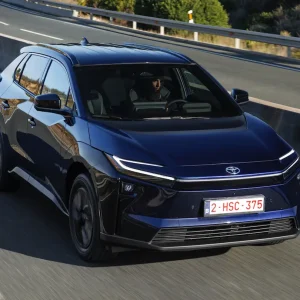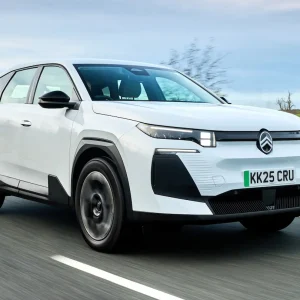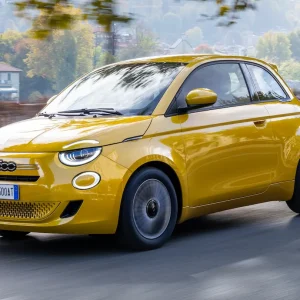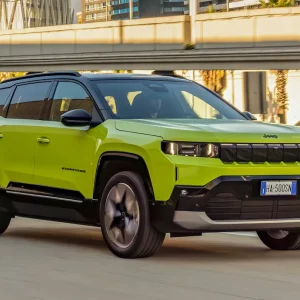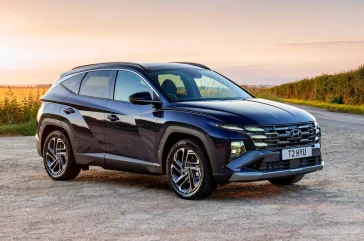
The Hyundai Tucson took a big step forward with the introduction of the fourth-generation model in 2021, with a striking design and abilities that placed it among the best in the C-SUV segment. With so much competition in that section of the market these days, the time has come for Hyundai to shore up its position with a facelift.
Exterior design changes to the model include redesigned front and rear bumpers, new skid plates, and larger daytime running lights. The revisions are fairly subtle, but this is no bad thing, since we’re yet to tire of the Tucson’s basic design after three years of seeing them on the road.
Interior and tech
Updates to the interior include a new steering wheel, and a redesigned dashboard and centre console – the latter features a good range of direct buttons and controls which are well laid out, and more easily understood than the pre-facelift version, with the climate control display also updated.
Where the pre-facelift Tucson had a pair of 10.25in screens fulfilling infotainment and driver display functions, there are now two 12.3in screens joining to form a curved display, which gives an upmarket impression and works well. A steering column-mounted gear selector functions adequately, and helps to free up centre console space.
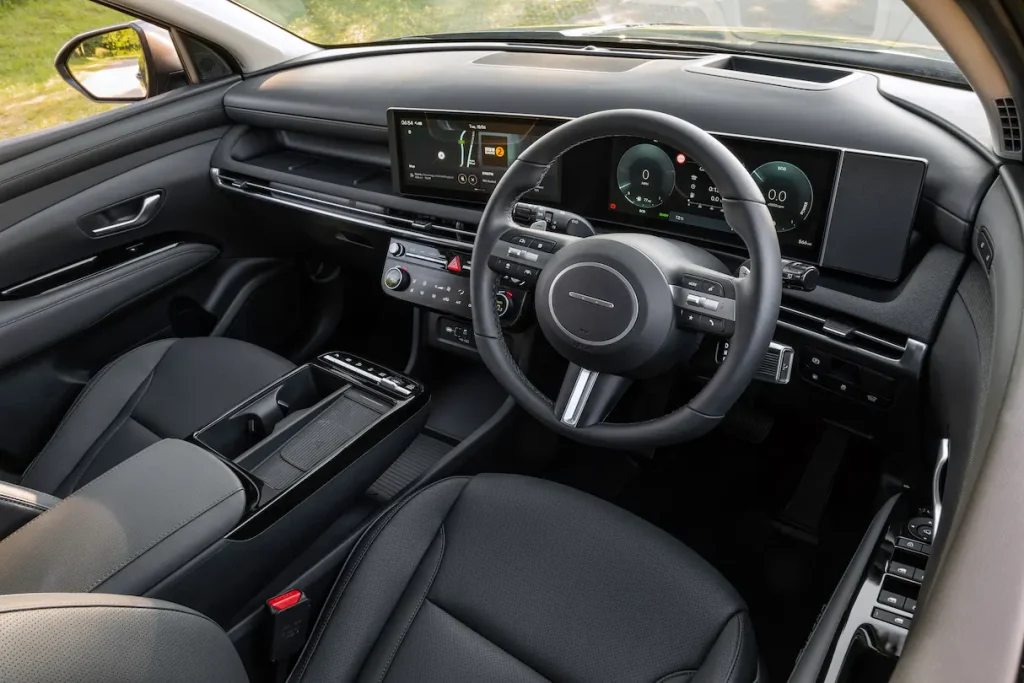
Given our Premium-spec test car is only one up from the entry point to the range (note the range-topping Ultimate grade is pictured), we found the interior trim quality to be pretty good, with a decent amount of leather around – although the driver armrest/storage cubby lid was a bit loose on our vehicle.
Rear seat legroom is decent, and plenty of headroom is available back there thanks to significantly (and adjustably) reclining seats. Rear passengers get their own USB ports, but no dedicated air vents.
The Tucson has a boot capacity of between 546 and 620 litres depending on the chosen powertrain, with the 616 litres on offer with our test car impressive – among the largest in the segment.
Performance and drive
Powertrain options are myriad, including a pure petrol, a mild hybrid, a conventional hybrid, and a plug-in hybrid – the latter newly available with two-wheel drive following the facelift. The conventional hybrid, tested here, has received a slight increase in electric motor power (as has the PHEV) and offers rapid acceleration for a family SUV. Thankfully the chassis is well up to this performance, with nicely responsive handling and brakes that pull up well. Ride quality is generally good, helped by seats which offer a great blend of comfort and support, and refinement is also largely impressive.
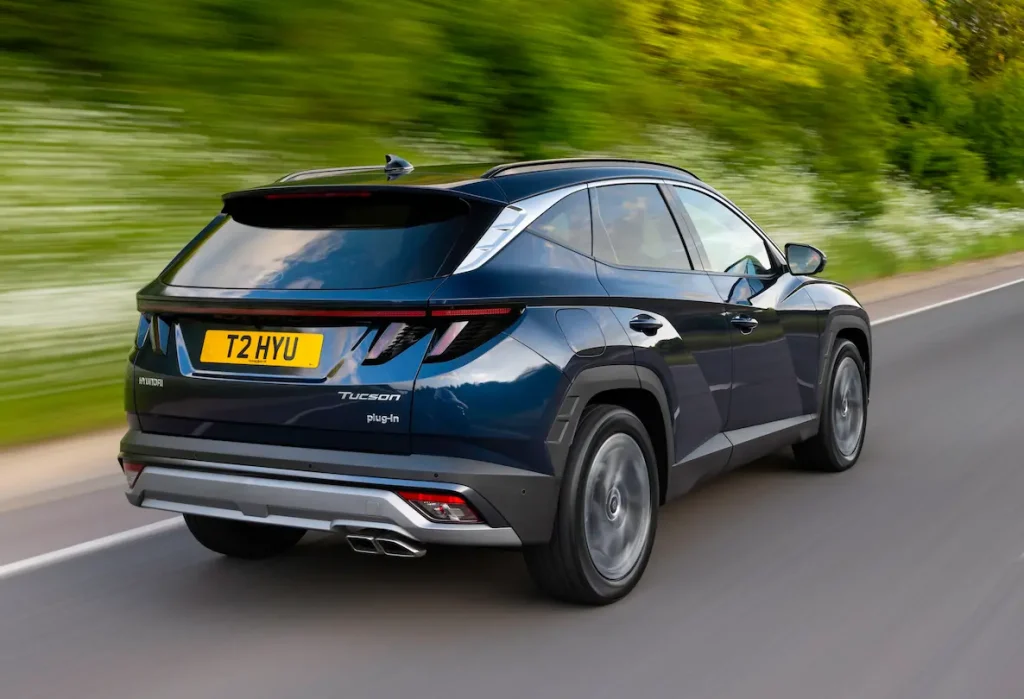
In the spec tested here, the Tucson is slightly more expensive than its cousin, the Kia Sportage – although that model is yet to receive its own mid-life update. We await that development with interest, but for now there’s little doubt that the Tucson still deserves consideration among the very best in its class – it’s simply a highly accomplished all-round performer.
Positive: Improved interior, big boot, comfortable and responsive drive
Negative: Kia Sportage cheaper, armrest fitting issue on test car
Standard equipment: 17in alloy wheels, LED headlights and tail lights, roof rails, privacy glass, keyless entry, automatic lights and wipers, front and rear USB-C charging ports, 12.3in touchscreen with sat-nav, 12.3in driver display, wireless Apple Carplay and Android Auto connectivity, wireless phone charging, dual-zone climate control, front and rear parking sensors, reversing camera, forward collision avoidance assist, lane follow assist, lane keep assist.
Engines: Petrol: 160hp 1.6; Petrol mild hybrid: 160hp 1.6; Hybrid: 215hp 1.6; Plug-in hybrid: 252hp 1.6
Equipment grades: Advance, Premium, N Line, N Line S, Ultimate
Transmissions: Six-speed manual, six-speed automatic, seven-speed automatic
| Model | Hyundai Tucson Premium 1.6T 215PS Hybrid |
| P11D | £37,825 |
| Residual value | 48.2% |
| Depreciation | £19,558 |
| Fuel | £6,260 |
| Service, maintenance and repair | £3,271 |
| Cost per mile | 48.48p |
| Fuel consumption | 48.7mpg |
| CO2 (BIK%) | 131g/km (31%) |
| BIK 20/40% a month | £195/£390 |
| Luggage capacity | 616 litres |
| Engine size/power | 1,598cc/215hp |
| Score | 9/10 |

